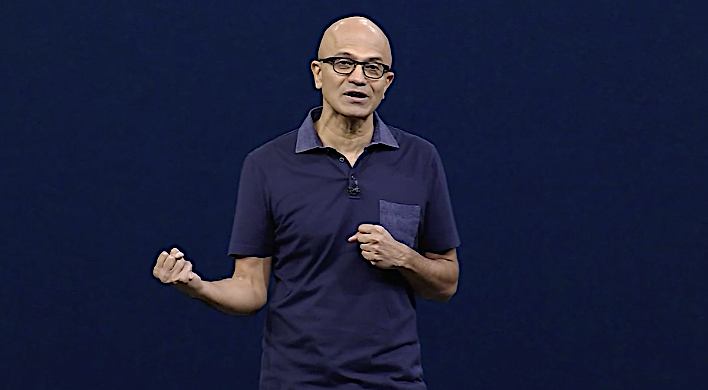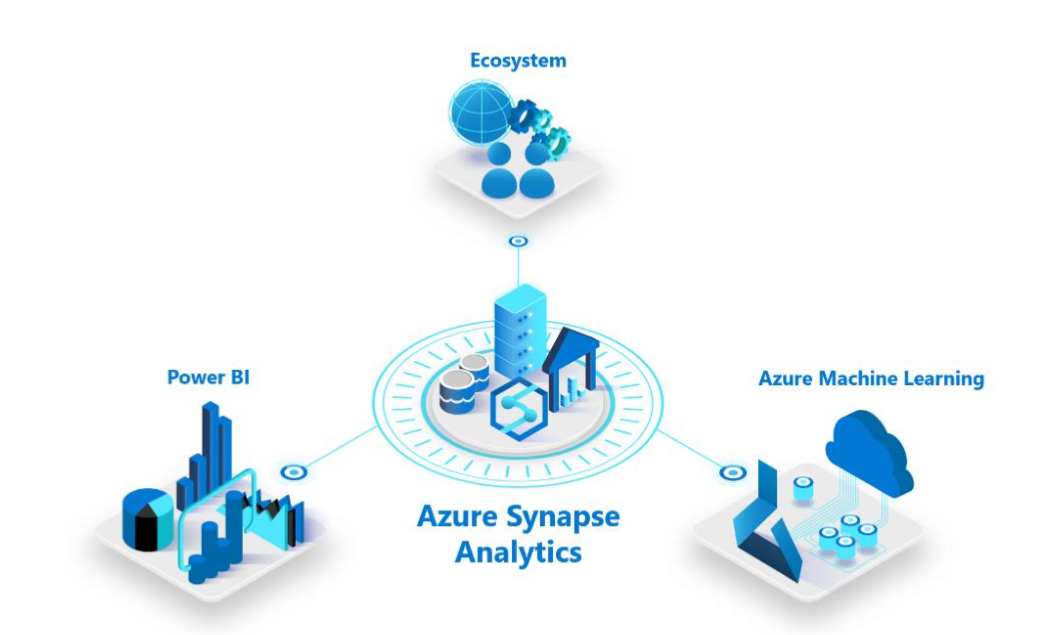 CLOUD
CLOUD
 CLOUD
CLOUD
 CLOUD
CLOUD
Microsoft Corp. is expanding its hybrid cloud capabilities with the launch of a raft of new services this morning at its Ignite 2019 conference.
The most important may be Azure Arc, available in preview starting today. It was announced at the weeklong conference in Orlando, Florida, where Microsoft Chief Executive Satya Nadella (pictured) laid out the company’s expansive cloud plans early today.
Azure Arc gives enterprises an easier way to deploy Azure cloud services on any kind of infrastructure platform, including on-premises servers and rival public clouds. It’s all about unlocking new hybrid cloud scenarios for customers, Microsoft said.
The reality today is that organizations are increasingly running distributed applications across multiple edge devices and cloud computing platforms. What they need now is a more consistent way to manage and secure those apps, and that’s what Azure Arc is meant to address.
Azure Arc is a set of tools that enables various Azure services, such as Azure Resource Manager, Azure Shell, Azure Portal, Azure API and Azure Policy, to be extended to any computing platform, including Windows and Linux servers and Kubernetes clusters, located on-premises, in the cloud or at the edge.
“With Azure Arc, developers can build containerized apps with the tools of their choice and IT teams can ensure that the apps are deployed, configured, and managed uniformly using GitOps-based configuration management,” Julia White, corporate vice president of Microsoft Azure, wrote in a blog post.
James Kobielus, an analyst with SiliconANGLE’s sister market research firm Wikibon, said Microsoft is taking a bold step with Azure Arc, enabling it to support multicloud deployments of various Azure services without sacrificing control over them.
“The announcement of this offering in preview propels Microsoft directly to the forefront of the emerging enterprise multicloud,” Kobielus said. “Its customers will be able to leverage their investment in Azure services such as Azure SQL Database and Azure Database for PostgreSQL Hyperscale by deploying them to third-party public clouds, to heterogeneous Kubernetes clusters on-premises and in the cloud, and to disparate edge infrastructure.”
In essence, added Patrick Moorhead, president and principal analyst at Moor Insights & Strategy, “Azure Arc is Microsoft’s ultimate ’embrace and extend’ move as it enables enterprises a single plane of glass to manage on-prem and multicloud workloads, even at AWS.”
This increased workload portability will be welcomed by enterprises because the vast majority still don’t know where the bulk of their data will live, said Constellation Research Inc. analyst Holger Mueller. He said it makes sense that the services that use this data are made more flexible, something that Microsoft’s rival Google LLC has already done with the launch of its Anthos service earlier this year.
“Data gravity is real, so workloads need to be brought to the data,” Mueller said. “What executives want are next-generation compute platforms that allow workloads to migrate from on-premises to the cloud and back.”
In line with its multicloud vision, Microsoft also announced an expansion of its Azure Stack infrastructure that brings Azure cloud capabilities into customers’ on-premises data centers. Azure Stack Edge is a fully-managed and artificial intelligence-enabled appliance meant for edge locations such as manufacturing facilities and remote offices. The idea with the appliance is to enable machine learning-based inferencing at the edge, Microsoft said.
“This AI-enabled edge-computing device has network data transfer capabilities, incorporates a built-in FPGA for accelerated AI-inferencing, and functions as an edge storage gateway,” Kobielus said. “It also provides customers with the option of running applications on virtual machines or containers. It also offers automatic failover of the devices so that, in case of a loss of a server in an edge cluster, a VM can automatically move to another server.”
Also at Ignite, Microsoft announced a new service called Azure Synapse Analytics that attempts to bring together insights from two kinds of analytical systems – namely data warehouses and data lakes – for the first time.
“Data warehouses provide critical insights on business health,” Rohan Kumar, corporate vice president of Azure Data, wrote in a second blog post. “Data lakes can uncover important signals on customers, products, employees and processes. Both are critical, yet operate independent of one another, which can lead to uninformed decisions. At the same time, businesses need to unlock insights from all their data to stay competitive and fuel innovation with purpose.”

Available in preview, Azure Synapse Analytics is described as a “limitless analytics platform” that enables organizations to tap into all of their data stores and gain insights with unprecedented speed, Microsoft said. It allows users to query both relational and nonrelational data using the familiar structured query language. Furthermore, the service integrates with Microsoft Power BI and Azure Machine Learning so users can easily generate insights and apply machine learning models to new applications.
Stu Miniman and Rebecca Knight, co-hosts of theCUBE, SiliconANGLE Media’s livestreaming studio, provided a deeper analysis of Nadella’s keynote:
Support our mission to keep content open and free by engaging with theCUBE community. Join theCUBE’s Alumni Trust Network, where technology leaders connect, share intelligence and create opportunities.
Founded by tech visionaries John Furrier and Dave Vellante, SiliconANGLE Media has built a dynamic ecosystem of industry-leading digital media brands that reach 15+ million elite tech professionals. Our new proprietary theCUBE AI Video Cloud is breaking ground in audience interaction, leveraging theCUBEai.com neural network to help technology companies make data-driven decisions and stay at the forefront of industry conversations.